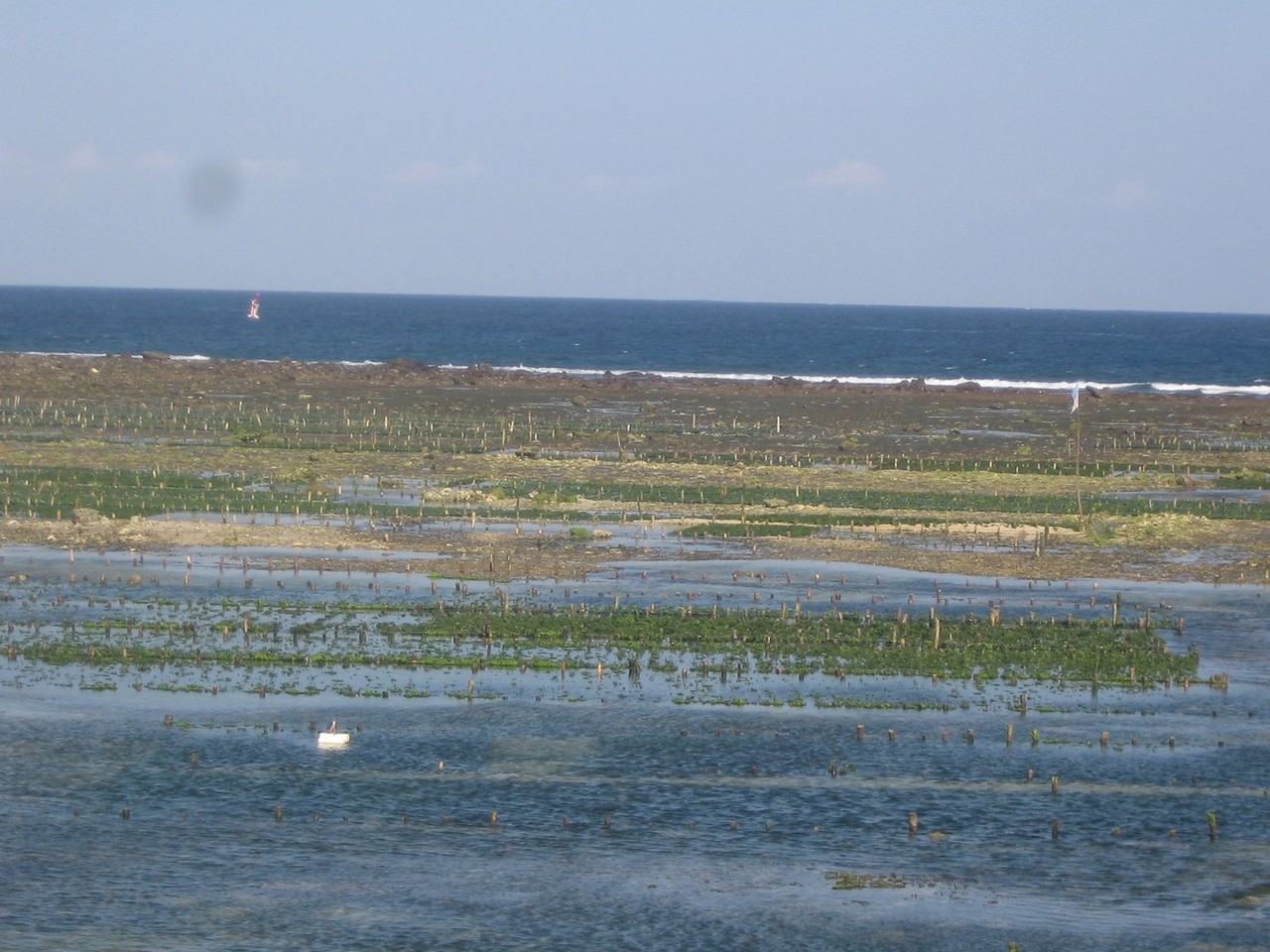The problem for seagrass meadows is that they’re often overlooked, regarded as merely an innocuous feature of the ocean. In Indonesia, seagrass meadows are a marginalised ecosystem that must be increasingly managed, protected and monitored – and need urgent attention now. The reason for this is that we have recently found evidence that seagrass meadows throughout Indonesia are under increasing threat. Loss is thought to be widespread and rapid. Changing environmental conditions due largely to coastal development, land reclamation, and deforestation, as well as seaweed farming, overfishing and garbage (mostly plastics) dumping are all harming Indonesia’s seagrass. This research has this week been published in the international scientific journal ‘Science of the Total Environment’.
Seagrass scientists working at twenty one of twenty three locations have witnessed declining seagrass health and habitat loss over the last 5 years. These findings were based on work we did together with over twenty seagrass scientists from across the Indonesian archipelago, from West Papua in the east to Mentawai Island (off Sumatra) in the west. We examined the risks to seagrass meadows across the country. We also looked at evidence of seagrass loss and why scientists saw these habitats as being important in their part of Indonesia.
The evidence from scientists around Indonesia is that coastal development is a problem for seagrass. This is typically because large developments, expanding urban areas, and new coastal infrastructure disturb the coastline. Sometimes this is the direct reclamation of areas of the sea, but often it’s also the movement of the beach, dredging of channels and marinas and loss of sediment into the sea. One of the research participants (Dr Wawan Kiswara, now retired after over 30 years of research for the Indonesian Institute of Sciences LIPI) provided extensive photos documenting the mining of sand directly from seagrass meadows to be used in building.
A major cause of loss of seagrass is the dirty water coming from the nations rivers. This is a significant problem not just in Indonesia but across the region. This loss is driven by large scale land use change, everything from deforestation to growing pollution levels from increasing population. Ultimately sewage, sediments and other pollutants end up in rivers and smother the coastline in dirty water, damaging marine life.
Our study has also recognised some less appreciated problems for seagrass in Indonesia. The rapid and expansive growth of seaweed farming is also resulting in seagrass loss and degradation. As shallow water sheltered areas, seagrass meadows provide excellent areas to grow seaweed, creating great alternative incomes for fishers struggling due to declining fish catches. But the evidence suggest that this activity only serves to exasperate the problem of declining fisheries and destroys the seagrass, a key part of the fishery habitat. The growing presence of plastic rubbish is also damaging seagrass, together with locally specific problems of oil pollution. The growing population of Indonesia and the rapidly growing economy is increasing the demand for high value seafood. Particularly as Indonesia’s coral reefs rapidly degrade fishers are increasingly focussing their efforts on seagrass. These factors are leading to the problem of overfishing, which is another major problem for seagrasses highlighted by our study. In some areas of Indonesia, fishing gear in seagrass is so frequent that boat navigation has become impossible.
The loss of seagrass leads in turn to the loss of most of the fish and invertebrate populations that the meadows support. The green turtle, dugong and species of seahorse, for example, all rely on seagrass for food and shelter, and loss endangers their viability. The plants are important fish nurseries and key fishing grounds. Losing them puts the livelihoods of millions of people throughout Indonesia at risk too, and exposes them to increasing levels of poverty.
The loss of seagrass in Indonesia is potentially huge and continues to be rapid. We’ve personally seen some of these losses in parts of Sulawesi. Whilst these problems are often unseen and indicate a huge environmental problem there is hope. The causes of these losses are all manageable, the problems can readily be solved at local levels with appropriate efforts. We’re now seeing from many areas of the world where examples of good land and river management have led to long-term seagrass recovery.
Seagrasses in Indonesia should theoretically be protected (e.g. Government Regulation No. 7 of 1999, Protection of Indonesian Flora and Fauna) but enforcement and management is limited and doesn’t empower local people to be able to protect their local seagrass. Our study also highlights that much can be done to manage seagrasses at the local level. Communities and villages need to be empowered by government policy and legislation that allows local people to take decisions to manage and protect their own resources so that they can protect their own livelihoods into the future.
Seagrasses are vital parts of Indonesia’s biodiversity and natural resources. With the right government support they can continue to support vast fisheries upon which millions depend upon daily.
The writers are Dr Richard Unsworth (Swansea University, UK) and Dr Leanne Cullen-Unsworth (Cardiff University, UK) who have worked on this study in partnership with Prof Rohani Ambo-Rappe at Hasanuddin University (Makassar). These scientists have all studied Indonesian seagrass for upwards of 15 years.






Please sign in or register for FREE
If you are a registered user on Research Communities by Springer Nature, please sign in